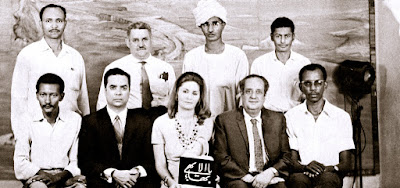From a Tablet revealed by 'Abdu'l-Baha for Mrs. Pocohontas
in Washington, USA:
Render thanks to the Lord that among that race thou
art the first believer, [1] arisen to guide others. It is my hope that through
the bounties and favours of the Abha Beauty thy countenance may be illumined,
thy disposition pleasing, and thy fragrance diffused, that thine eyes may be
seeing, thine ears attentive, thy tongue eloquent, thy heart filled with
supreme glad-tidings, and thy soul refreshed by divine fragrances, so that thou
mayest arise among that race and occupy thyself with the edification of the
people, and become filled with light. Although the pupil of the eye is black,
it is the source of light. Thou shalt likewise be. The disposition should be
bright, not the appearance. Therefore, with supreme confidence and certitude,
say: 'O God! Make me a radiant light, a shining lamp, and a brilliant star, so
that I may illumine the hearts with an effulgent ray from Thy Kingdom of
Abha....'
- ‘Abdu’l-Baha (The Compilation of Compilations, vol. II,
Women)
[1] This Tablet was addressed to one Mrs. Pocohontas in
Washington. According to Fadil Mazandarani, the recipient of the Tablet was a
black woman. See Tarikh-i-Zuhuru'l-Haq, vol. 8, part 2, p. 1209 (Tihrán: Bahá'í
Publishing Trust, 132 B.E.). Additional information provided by the Archives of
the National Spiritual Assembly of the United States indicates that Mr. Louis
Gregory, in a history of the Washington, D.C. Bahá'í community, mentions a
black Bahá'í, Mrs. Pocohontas Pope, who is likely the same person. Mrs. Pope
learned of the Bahá'í Faith through Alma and Fanny Knobloch and Joseph and
Pauline Hannen. There is, at present no other information on Mrs. Pope. (The
Compilation of Compilations, vol. II, Women)


































